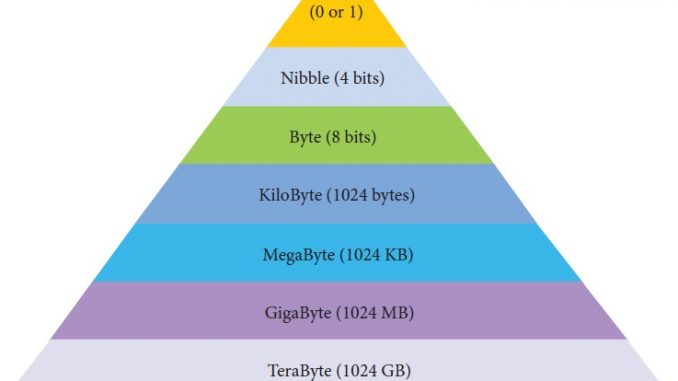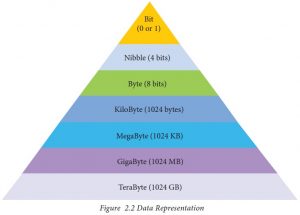
Sri Lanka Schools AL ICT Number System and Data Representation (ICT Grade 12 Lesson 3 ). After studying this chapter, you will be able to understand the following:
- Analyses of how numbers are represented in computers
- Analyses how characters are represented in computers
- Uses basic arithmetic and logic operations on binary numbers
You can get better practical knowledge by watching the given videos related to the topics mentioned in the syllabus of this lesson AL ICT Number System and Data Representation. By clicking on the relevant categories, you can see the description of the lesson related to the topic
? Learning Video Option 1 – Sinhala Medium – Play List Included 15 Videos with Question discussion
-

03 වන ඒකකය | 01 වන පාඩම - පරිඝණකයක සංඛ්යා නිරූපණය කරන ආකාරය - 01 වන කොටස | AL ICT Unit 03 Lesson 1
-

03 වන ඒකකය | 01 වන පාඩම - පරිඝණකයක සංඛ්යා නිරූපණය කරන ආකාරය - 02 වන කොටස | AL ICT Unit 03 Lesson 1
-

03 වන ඒකකය | 01 වන පාඩම - පරිඝණකයක සංඛ්යා නිරූපණය කරන ආකාරය - 03 වන කොටස | AL ICT Unit 03 Lesson 1
-

03 වන ඒකකය | 02 වන පාඩම - පරිඝණකය තුල අනුලක්ෂණ නිරූපනය කරන ක්රම - 01 වන කොටස | AL ICT Unit 03
-

03 වන ඒකකය | 03 වන පාඩම - මූලික අංක ගණිතමය සහ තාර්කික මෙහෙයුම් - 01 වන කොටස | AL IT Unit 03 Lesson 1
-

03 වන ඒකකය | 03 වන පාඩම - මූලික අංක ගණිතමය සහ තාර්කික මෙහෙයුම් - 02 වන කොටස | AL IT Unit 03 Lesson 3
-

03 වන ඒකකය | 04 වන පාඩම - සමාලෝචන ප්රශ්න - 02 වන කොටස | AL IT Unit 03 Lesson 04
-

03 වන ඒකකය | 04 වන පාඩම - සමාලෝචන ප්රශ්න - 03 වන කොටස | AL IT Unit 03 Lesson 04
Given below is an AL ICT resources Book prepared in relation to your syllabus.
For an enlarged view of the resources Book, ? Click Here
Related resources and links to this lesson
Resource Book Lesson Note Download Questions Syllabus
External Links
This summary table serves as a comprehensive reference to reinforce your understanding of the lesson’s key content.
| topic | Subtopics/Content |
|---|---|
| Need for instruction and data representation in digital devices | – Explanation of the necessity for instruction and data representation in digital devices |
| Methods of instruction and data representation in computers | – Representation of data in two states (0,1) |
| Number systems used in computing | – Binary, octal, hexadecimal |
| – Conversion between number systems | |
| Representation of decimal numbers (signed and unsigned) | – Signed integer representations |
| – Signed magnitude | |
| – One’s complement | |
| – Two’s Complement | |
| Methods of Character Representation in computer | – Lists various methods of character representation in computers |
| Conversion of symbols into a representation scheme | – Describes the process of converting given symbols into a representation scheme |
| Advantages and disadvantages of different data representation schemes | – Discusses the pros and cons of various data representation schemes |
| Addition of numbers with or without carryovers | – Works out additions of multiple numbers with or without carryovers in a computer context |
AL ICT Number System
Understanding Number Representation in Computers
In the world of computer science and information technology, numbers play a fundamental role in various operations and calculations. Understanding how numbers are represented in computers is crucial for developing efficient algorithms, designing hardware architectures, and optimizing software applications. This article will delve into the analysis of number representation in computers, explore the representation of characters, and discuss basic arithmetic and logic operations on binary numbers.
Table of Contents
- Introduction
- Number Representation in Computers
- Binary Number System
- Decimal Number System
- Hexadecimal Number System
- Binary Arithmetic and Logic Operations
- Addition and Subtraction
- Multiplication and Division
- Logical Operations
- Character Representation in Computers
- ASCII Encoding
- Unicode Encoding
- Conclusion
- Frequently Asked Questions (FAQs)
1. Introduction
The AL ICT (Applied Learning Information and Communication Technology) curriculum introduces students to the foundations of computer science, including the representation of numbers and characters in computers. This knowledge is essential for understanding how computers store, process, and manipulate data.
2. Number Representation in Computers
Binary Number System
In computers, numbers are represented using the binary number system, which consists of only two digits: 0 and 1. Each digit in a binary number is called a “bit,” short for binary digit. Binary numbers are widely used in computer systems because electronic circuits can easily represent and manipulate two states, which correspond to binary digits.
Decimal Number System
While humans primarily use the decimal number system, computers internally represent numbers using the binary system. To facilitate human-computer interaction, computers convert decimal numbers to binary representations and vice versa using algorithms and conversion techniques.
Hexadecimal Number System
The hexadecimal number system is commonly used in computer programming and digital systems. It provides a more compact representation of binary numbers by grouping four bits together into a single hexadecimal digit. Hexadecimal digits range from 0 to 9 and A to F, where A represents 10, B represents 11, and so on.
3. Binary Arithmetic and Logic Operations
Computers perform arithmetic and logic operations on binary numbers to execute calculations and make decisions. Here are some fundamental operations:
Addition and Subtraction
Addition and subtraction of binary numbers follow the same rules as decimal numbers. However, when the sum or difference exceeds the capacity of the binary representation, a carry or borrow operation occurs.
Multiplication and Division
Multiplication and division of binary numbers involve repetitive addition and subtraction operations. These operations are performed using algorithms like the “shift and add” method for multiplication and “long division” for division.
Logical Operations
Logical operations, such as AND, OR, and XOR, are used to manipulate individual bits in binary numbers. These operations are fundamental in Boolean algebra and are extensively employed in digital logic circuits.
4. Character Representation in Computers
Computers not only store numbers but also characters for various purposes, such as text processing and communication. Characters are represented using character encodings that map them to numeric values.
ASCII Encoding
The American Standard Code for Information Interchange (ASCII) is a widely used character encoding scheme. It assigns unique numeric values to characters, allowing computers to represent and process textual data. ASCII encoding supports 128 characters, including uppercase and lowercase letters, digits, punctuation marks, and control characters.
Unicode Encoding
Unicode is a character encoding standard that aims to represent characters from all writing systems worldwide. It provides a universal character set, allowing computers to handle diverse languages and scripts. Unicode encoding supports over a million characters, including emojis, mathematical symbols, and rare scripts.
5. Conclusion
Understanding how numbers and characters are represented in computers is vital for anyone venturing into the field of information technology. The binary number system serves as the foundation for number representation, while character encodings enable computers to handle textual data. Additionally, arithmetic and logic operations on binary numbers form the basis for computational tasks in computer science.
In conclusion, the AL ICT curriculum equips students with the knowledge to comprehend number representation in computers, enabling them to develop robust software applications and contribute to the ever-evolving field of computer science.
6. Frequently Asked Questions (FAQs)
Q1: Why do computers use the binary number system?
Computers use the binary number system because electronic circuits can easily represent and manipulate two states, which correspond to binary digits (bits). Binary numbers simplify the design of digital systems and align with the physical nature of electronic components.
Q2: How does binary arithmetic work?
Binary arithmetic follows the same principles as decimal arithmetic. The addition and subtraction of binary numbers involve carrying and borrowing operations, while multiplication and division utilize algorithms specifically designed for binary calculations.
Q3: What is the purpose of character encodings in computers?
Character encodings map characters to numeric values, enabling computers to represent and process textual data. Different encodings, such as ASCII and Unicode, support various sets of characters to accommodate different languages, scripts, and symbols.
Q4: Can computers represent all characters in the world?
Yes, computers can represent all characters in the world using character encodings like Unicode. Unicode provides a universal character set that supports a vast range of languages, scripts, symbols, and emojis.
Q5: How does character encoding affect internationalization and localization?
Character encoding plays a crucial role in internationalization and localization efforts. By supporting diverse character sets, encoding standards like Unicode enable software applications and digital content to be adapted to different languages and cultural contexts.
In this article, we explored the representation of numbers and characters in computers. We discussed the binary number system, decimal number system, and hexadecimal number system. Additionally, we explored how computers perform arithmetic and logic operations on binary numbers. We also delved into character representation, including ASCII and Unicode encodings. By understanding these concepts, you’ll have a solid foundation in AL ICT and gain insights into the inner workings of computers.



Leave a Reply